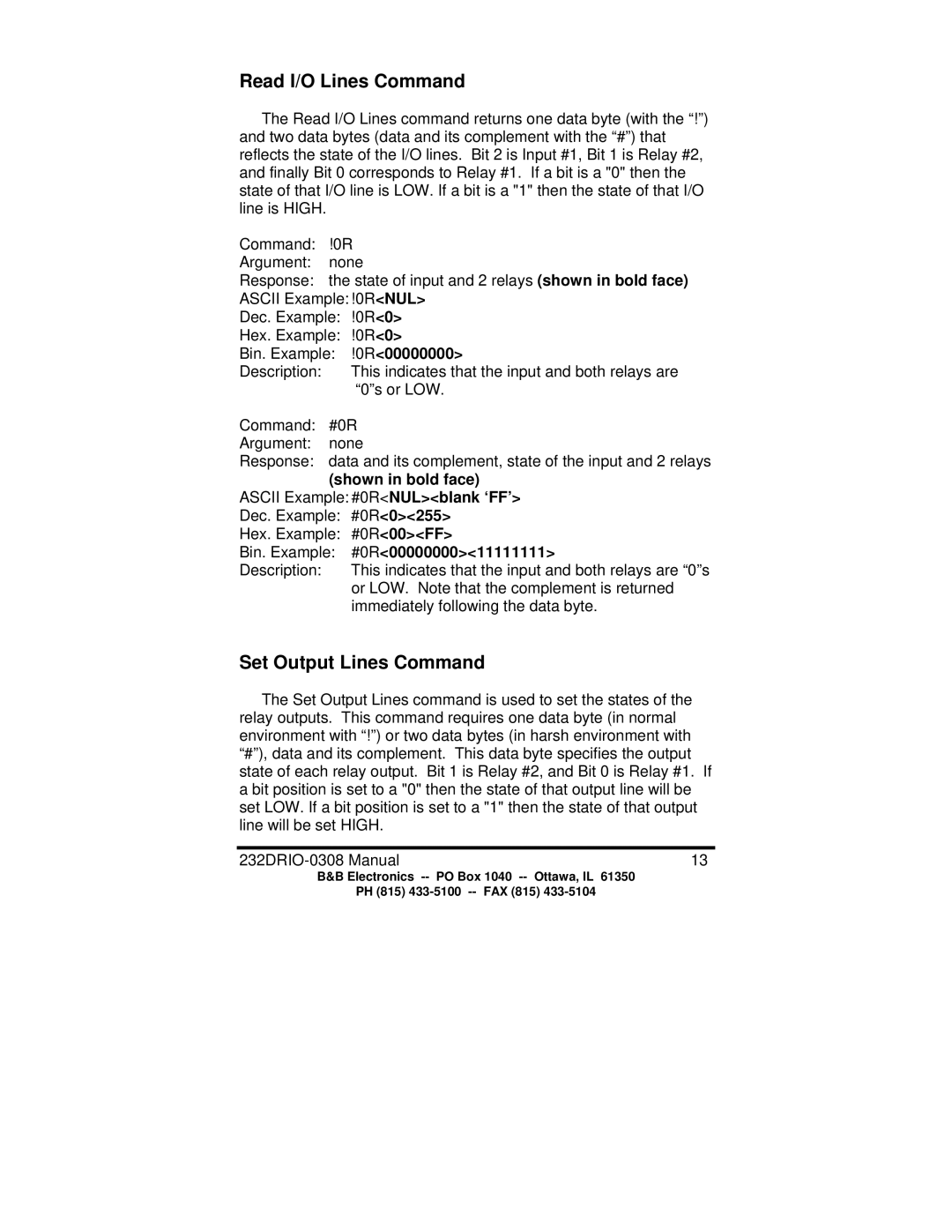Read I/O Lines Command
The Read I/O Lines command returns one data byte (with the “!”) and two data bytes (data and its complement with the “#”) that reflects the state of the I/O lines. Bit 2 is Input #1, Bit 1 is Relay #2, and finally Bit 0 corresponds to Relay #1. If a bit is a "0" then the state of that I/O line is LOW. If a bit is a "1" then the state of that I/O line is HIGH.
Command: !0R
Argument: none
Response: the state of input and 2 relays (shown in bold face)
ASCII Example: !0R<NUL>
Dec. Example: !0R<0>
Hex. Example: !0R<0>
Bin. Example: | !0R<00000000> |
Description: | This indicates that the input and both relays are |
| “0”s or LOW. |
Command: #0R
Argument: none
Response: data and its complement, state of the input and 2 relays
(shown in bold face)
ASCII Example: #0R<NUL><blank ‘FF’>
Dec. Example: #0R<0><255>
Hex. Example: #0R<00><FF>
Bin. Example: | #0R<00000000><11111111> |
Description: | This indicates that the input and both relays are “0”s |
| or LOW. Note that the complement is returned |
| immediately following the data byte. |
Set Output Lines Command
The Set Output Lines command is used to set the states of the relay outputs. This command requires one data byte (in normal environment with “!”) or two data bytes (in harsh environment with “#”), data and its complement. This data byte specifies the output state of each relay output. Bit 1 is Relay #2, and Bit 0 is Relay #1. If a bit position is set to a "0" then the state of that output line will be set LOW. If a bit position is set to a "1" then the state of that output line will be set HIGH.
13 |
B&B Electronics
PH (815)
